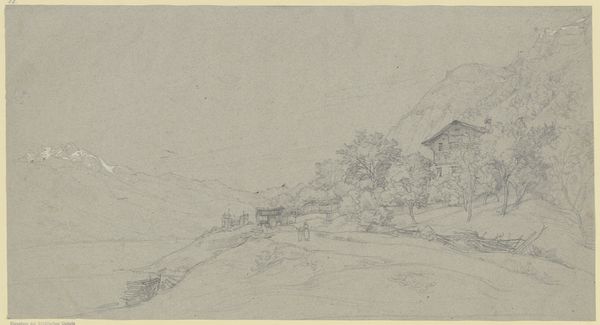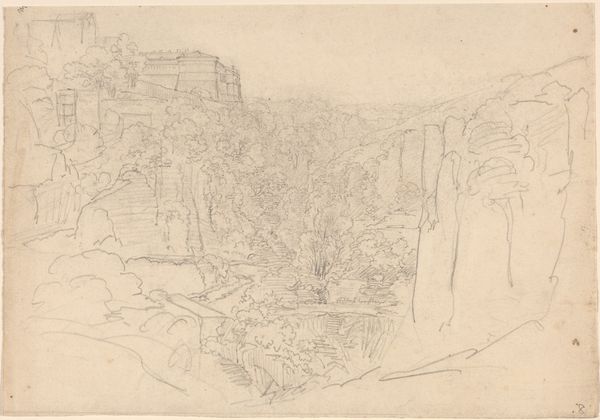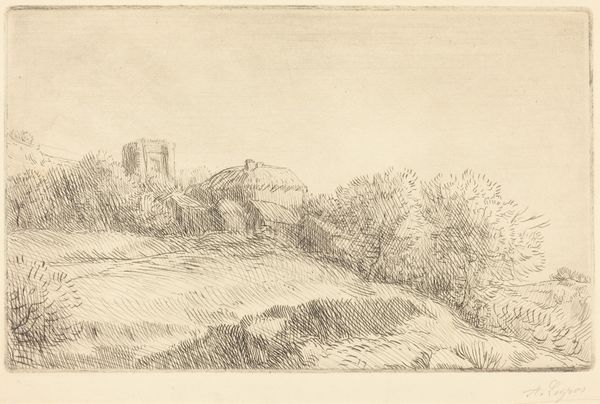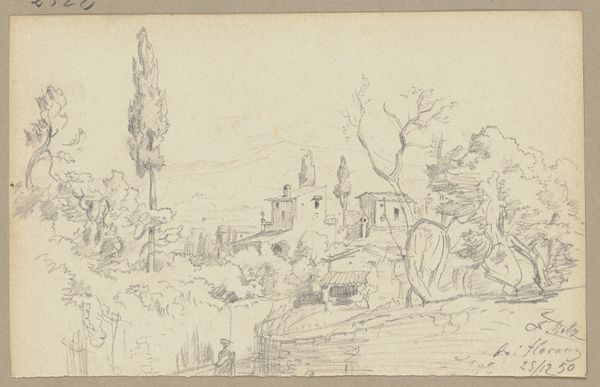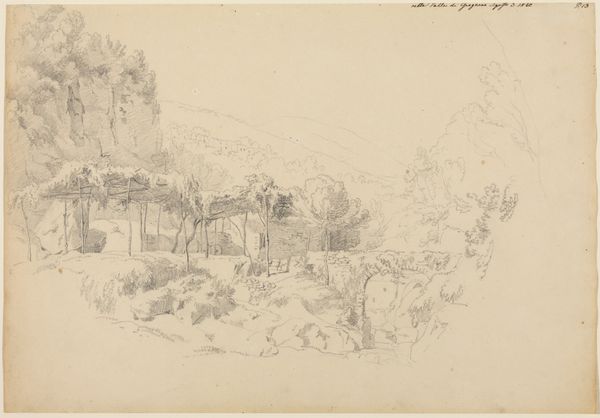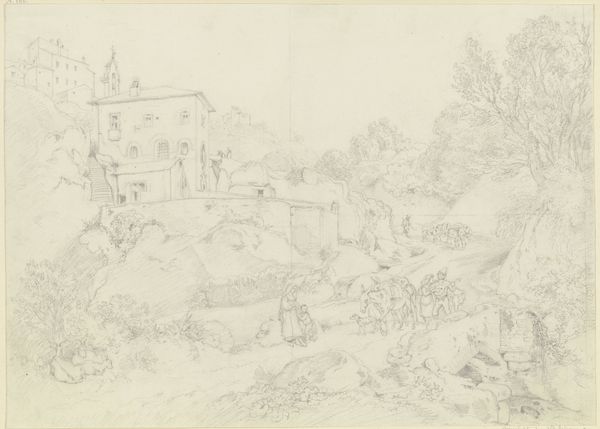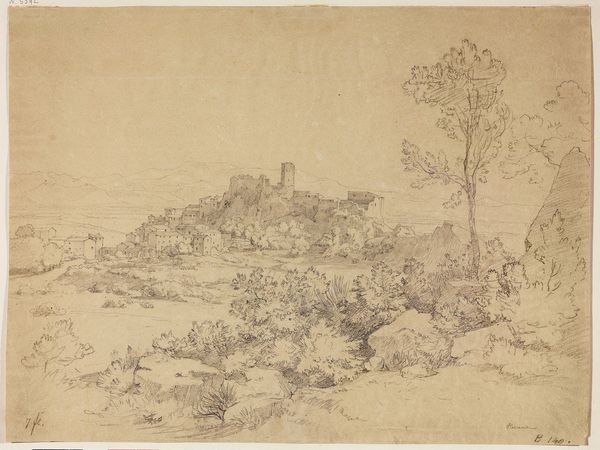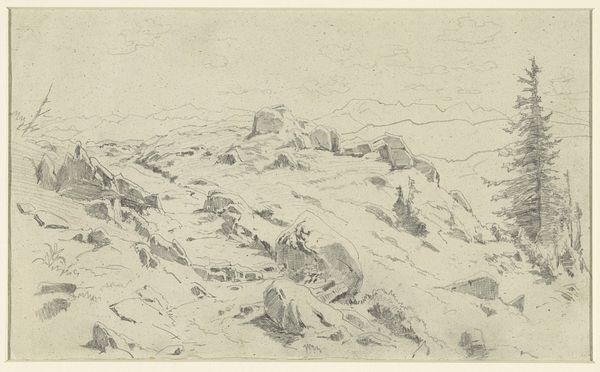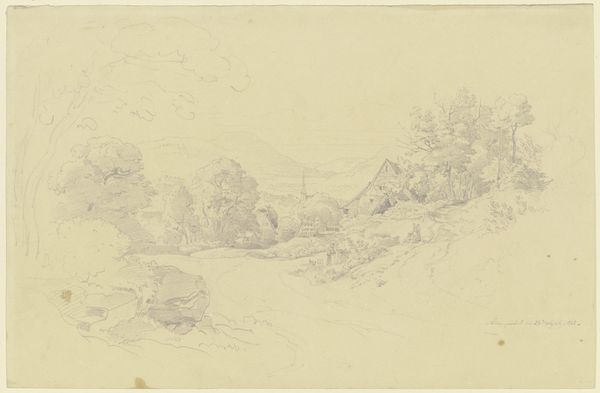
drawing, pencil
#
drawing
#
landscape
#
pencil
#
academic-art
#
realism
Dimensions: sheet: 33.02 × 48.58 cm (13 × 19 1/8 in.)
Copyright: National Gallery of Art: CC0 1.0
Curator: I find myself immediately drawn into this hushed stillness—almost like stepping into a memory. Editor: It’s “Hillside with Houses and Figures” by Worthington Whittredge, penciled somewhere between 1854 and 1859. A serene slice of life observed and quickly sketched, capturing the play of light on forms, I suppose. Curator: Light being the key. You feel the dry heat emanating from the paper itself. The cluster of figures standing almost suspended there on the hillside...it almost suggests a biblical tableau. A resting point in some important narrative, perhaps a "wait here" kind of scene. Editor: I get that. The simplicity makes you fill in the story. To me they’re like figures in a dream. Robed, indistinct, a blur, but at the same time completely part of this rustic architecture, you almost sense the figures belonging to that location. And those houses clinging to the slope – almost fortified with time and story! There is definitely a sacred aspect, you are right. Curator: The architectural forms create such an interesting dynamic! I like that "fortified" – so evocative. It is an echo of cultural memory for me, an echo of that collective search for places that give both security and identity. Houses are usually so much more that what is implied, they have so much symbolism within cultural settings... Editor: Absolutely, and look at how Whittredge captures that… barely-there rendering and all. He leaves enough out for us to conjure our own homes and stories around it. But I have a strange personal link to this; my own home overlooks a little, sun-bleached town that's really like that. You walk the streets, in that hazy heat, the figures just hanging around not saying a lot. Curator: Almost like archetypes, recurring patterns in human expression! And you are witnessing something like your past, or that feeling of cultural displacement you were describing... Interesting to consider how "landscape", usually denoting open spaces, becomes almost secondary. Editor: Very true, and it gives "landscape" a whole other emotional and historical gravity. Maybe you were right about that resting stop along the path of a bigger narrative, I suppose. It's as if the location creates the narrative, maybe?
Comments
No comments
Be the first to comment and join the conversation on the ultimate creative platform.

